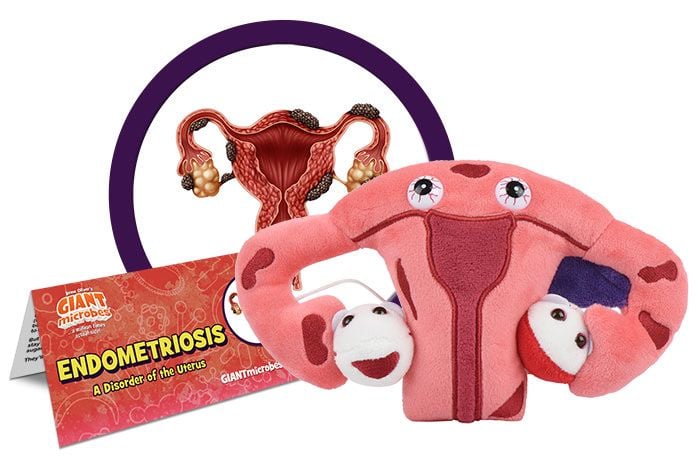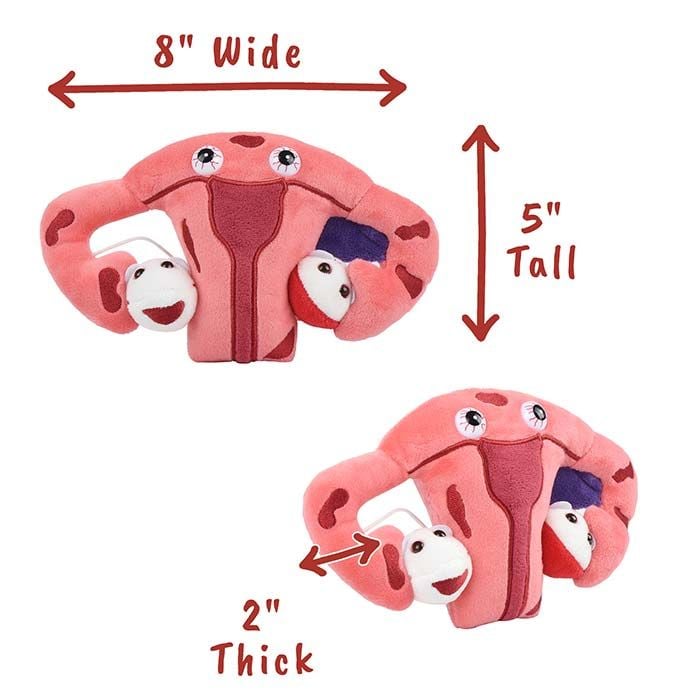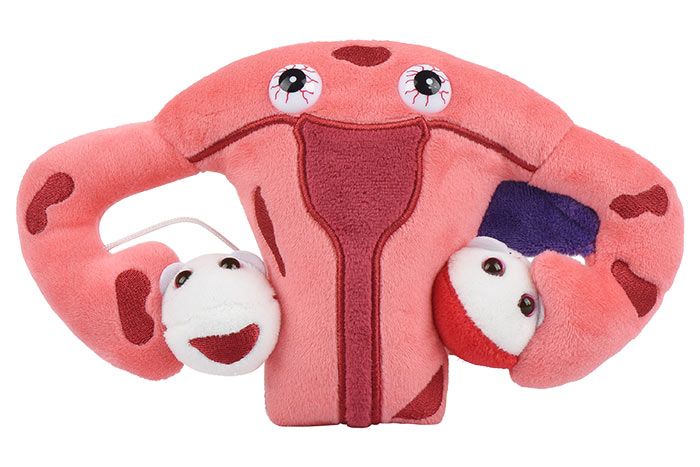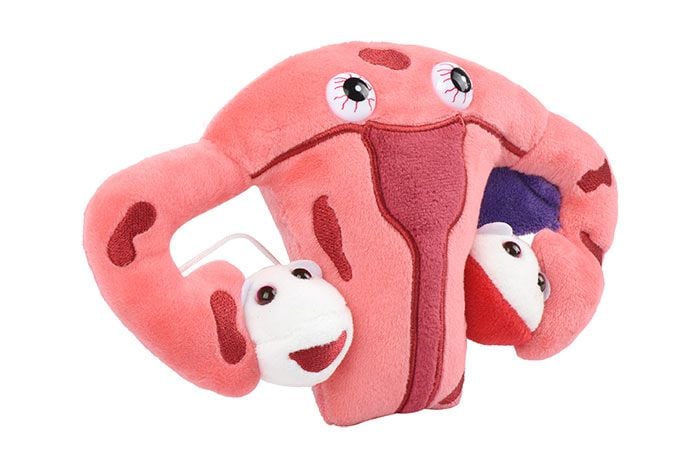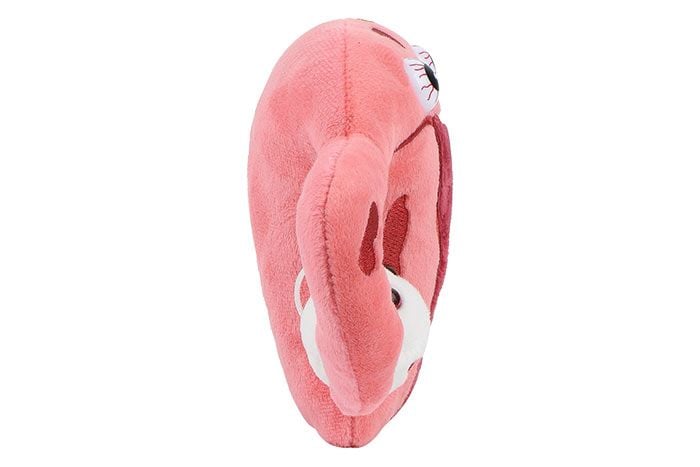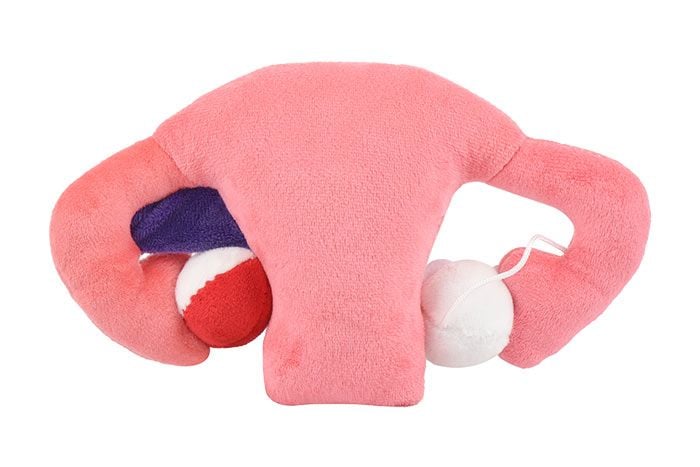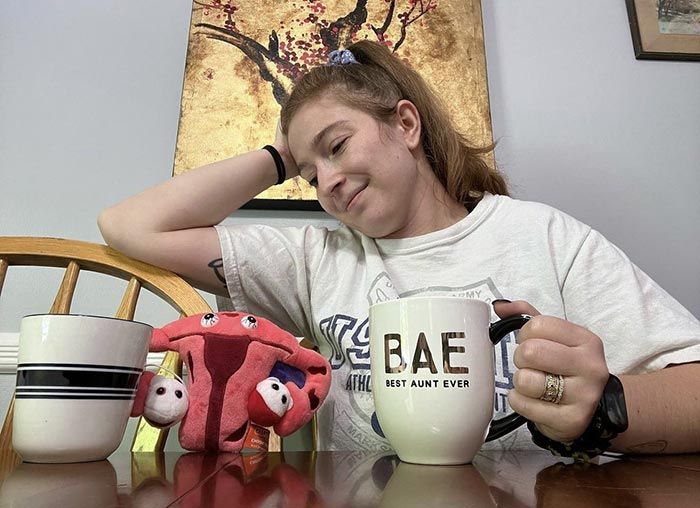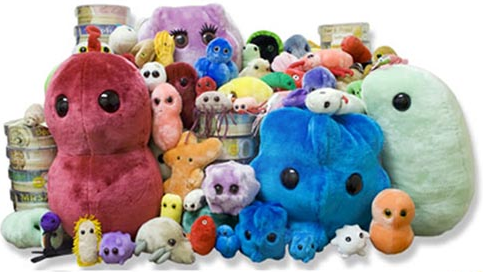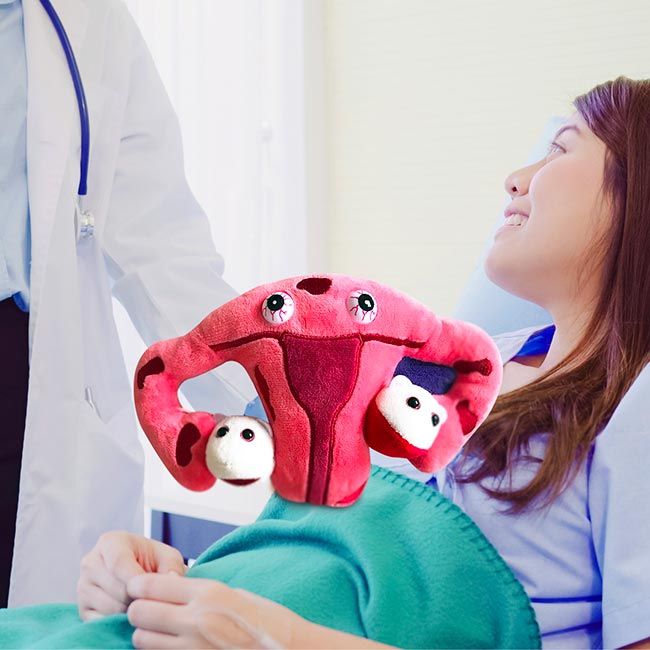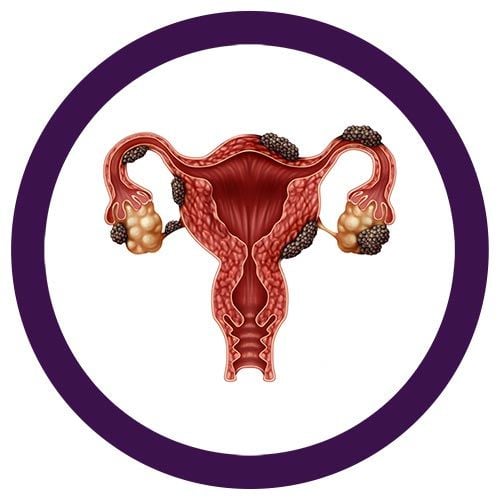Endometriosis
Endometriosis is a little-known but common disease that afflicts nearly 200 million people globally. Learn all about Endometriosis with our educational, unique adorable plush!
Cuddly, huggable, and soft, this memorable plushie depicting uterus will serve as your emotional support companion. Unique gift for Endo warriors, friends, students, nurses, doctors, educators, and anyone with a healthy sense of humor.
Looking for a one-of-a-kind Get Well gift or gynecological education gift? This Endometriosis plush is a great way to learn and will have you smiling and feeling good. Features 1 detachable ovary that magnetically attaches to the model, and 1 attached ovary representing endometrial adhesion. Includes an educational printed card with facts about Endometriosis and reproductive health.
Size: 8 x 5 x 2"
Product Details
Additional Information
| Sizes | Giantmicrobes are based on actual microbes, cells, organisms and other critters, only 1,000,000 times actual size! Gigantic (GG) 16-24" XL (XL) 10-15" Original (PD) 5-8" Keychain (KC) 2-4" with clip |
|---|---|
| Materials | Plush from all new materials. Stuffed with polyester fiber fill. Surface washable: sponge with water & soap, air dry. |
| Packaging | Each plush microbe includes a printed card with fun, educational and fascinating facts about the actual microbe or cell. |
| Safety | Every product meets or exceeds U.S. and European standards for safety. For ages 3 and up. |
All about Endometriosis
FACTS: Endometriosis is a little-known but common disease that afflicts nearly 200 million people globally. Endometriosis is a chronic inflammatory disease involving the growth of uterine tissue outside of the uterus. This endometrial-like tissue forms lesions that cause inflammation and scarring. These lesions can be tiny or large cysts known as endometriomas. The resulting symptoms include pain, constipation, organ dysfunction, and in some cases, infertility. Pain can be in the pelvis, back or legs and can also occur during urination or sex. A compromised quality of life is common. Many women struggle in silence, perhaps not even knowing they have it. The actresses Marilyn Monroe, Susan Sarandon and Whoopi Goldberg are some of the famous sufferers of endometriosis.
In adolescents and adults, endometriosis is often found in the pelvic and abdominal areas on the ovaries, bowel, bladder and soft tissues, but the lungs, brain and other regions can also be affected. The origin of the name is from Greek: “endos” meaning inside, “metra” meaning womb and “osis” for disease. This name implies that the endometrium, the inside lining of the uterus, causes an affliction. However, studies show that the endometriosis tissue is not the same as endometrial tissue.
The cause remains uncertain, but theories include hormonal, genetic and environmental origins. One early theory was retrograde menstruation, in which endometrial cells flow back through the fallopian tubes and enter the pelvic cavity. Another theory is that an immune system problem makes the body unable to recognize and destroy endometrial tissue growing outside the uterus. Recent studies have even linked endometriosis to sunbathing and the use of tanning beds, however, none of these theories have been scientifically proven.
One problem in treating endometriosis is the difficulty that doctors face in diagnosing it. Ultrasound and MRI imaging, for example, may not find it. A diagnosis can be made through minimally invasive surgery, or laparoscopy. There are no definitive cures for endometriosis, but there are effective treatments to ease symptoms. These include surgical removal of the lesions combined with pain management and medications. Exercise, physical therapy and nutrition may help some. Women who struggle with endometriosis do remain hopeful. Through education and increased public awareness, there will be an increase in the funding of medical research for diagnosing, treating and curing this disease.


